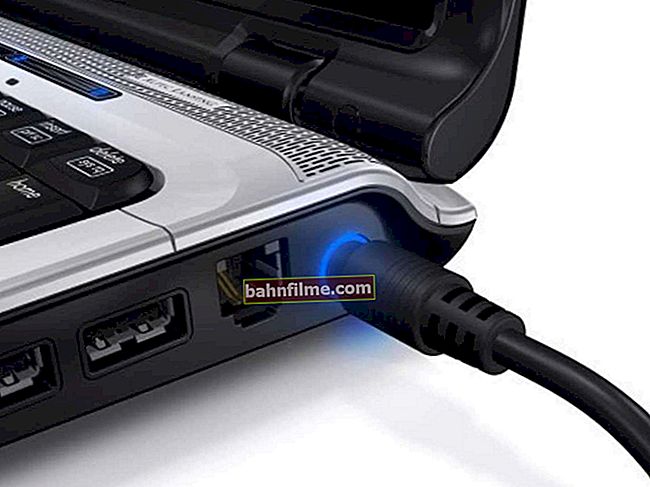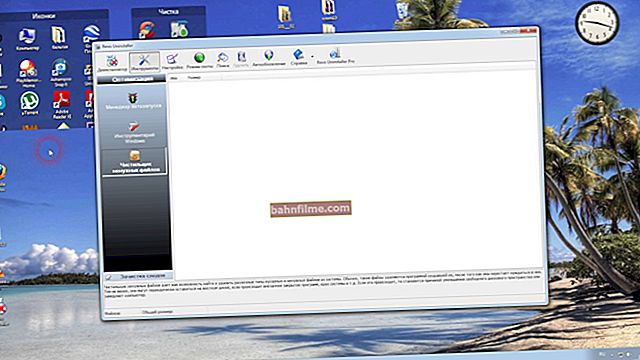
User question.
Hello.
Please tell me with one question. I have a SAMSUNG RV508 laptop. But the fact is that I need to know the exact modification of it, since the RV508 is just a model range, and (as far as I know today) there can be three types of them!
So, where can you see the exact 100% modification of the device?
Good day!
In fact, not every laptop has a sticker next to the keyboard by which you can immediately identify the device, sometimes you have to spend a little more time ✌.
But exact modification may be needed when you decide to upgrade your device, update drivers (especially when resolving a driver conflict), update the BIOS, buy a cover, etc.
In this article I will show you several ways how you can solve a similar issue. So...
*
Where to see the exact laptop model
Method number 1: stickers on the body, documents for the device
It is logical that the simplest and most obvious where to start is by examining the documents that came with your device (if, of course, they remained) and stickers on the laptop case. By the way, many people mistakenly believe that there are 1-2 stickers on a laptop that they see next to the keyboard (as in the example below). And if the model is not indicated on such a sticker, then that's it, you need to look for the cherished programs ...

Sticker on the case next to the keyboard - no modification is indicated on it // Lenovo B70
Far from it! If you turn off the laptop and turn it over, then in most cases (99%) there will be additional stickers from your device manufacturer on the back wall. As a rule, it contains very detailed information: the exact model and modification of your laptop (example below).

Exact laptop model: sticker on the back of the device / Lenovo B7080, model: 80MR
Nevertheless, below I will give a few more ways, if suddenly the sticker faded, or it was not there (or there is no time to turn off the device and turn it over 😉) ...
*
Method number 2: using information in Windows
MSINFO32 - System Information
Quite an informative way, it works in all popular versions of Windows: XP, 7, 8, 10. In order to open information about the system, you need:
- press a combination of buttons Win + R;
- enter command msinfo32;
- press Enter.

msinfo32 - View computer information
Next, in the window that opens, pay attention to the tab "System Information" , it is in this model that the manufacturer and model of your device are indicated (example in the screenshot below).

System information
DXDIAG - DirectX Information
Through the DirectX diagnostic tool, you can also find out some information about your device (including the one that we are pursuing in this article ☺).
To start, also call the window "Run" (shortcut Win + R) and enter the command dxdiag.

Run DirectX Diagnostic Tool (DxDiag)
Then, after a moment, you will see a DirectX diagnostic window. Basically, on the first screen you should display information about the system: among which there will be the model and manufacturer of your device (example below).

DirectX Diagnostic Tool
CMD - Command Line
Through the command line, you can still get a bunch of information about your computer / laptop, manage it and set such settings that are not available from other places ...
To open a command prompt: press Win + R then enter the command CMD and press Enter (example below).

cmd - run command line
To help!
Other ways to open command prompt in different Windows OS - //ocomp.info/kak-otkryit-komandnuyu-stroku.html
Then use one of the two commands, they are given below.
1) SYSTEMINFO
This command (note: SYSTEMINFO ) allows you to get quite a lot of information about your Windows OS, processor, device model, etc. The screenshot below shows where to find the model and manufacturer of the system (that is, the laptop).

2) wmic csproduct get name
Another command that will show directly only the laptop model.In my opinion, it is not entirely informative (especially with some devices) - you can only see the modification of your device, but not the manufacturer and model (as in the example below).

*
Method number 3: using special utilities
In general, I personally recommend that you have at least 1 utility on your computer that can display as much information as possible about your system, temperature, hardware, etc. For many problems, such a utility will help you out more than once. I wrote about such utilities in one of my articles (I will give the link below).
To help!
How to find out the characteristics of a computer (laptop) - the best utilities: //ocomp.info/harakteristiki-kompyutera.html
One of the best utilities (in my opinion) is AIDA 64 (Everest). It allows you to find out as much information as possible about your laptop, about any of your hardware installed in the PC. As for the device model: you can open the tab "Computer / Summary Information" (or the section on motherboard information). An example is shown in the screenshot below.

AIDA 64 - summary information
For those who are not satisfied with this utility for one reason or another, follow the link above to find its counterparts: Speccy, CPUZ, Astra 32, etc.
*
Method number 4: using BIOS
If you go into the BIOS, then, as a rule, on the first screen (usually in English it is called as Main or Information) You should see information about the hardware and its manufacturer. You can find the following information: product name (device model), serial number, BIOS version, processor model, hard disk model, amount of RAM, etc. An example is shown in the photo below.

Exact laptop model in BIOS // Photo from Lenovo B70-80 laptop
I will give here a few reference articles that will be useful to you if you are not aware of how to enter the BIOS, how to configure it, what to do and where to click ...
To help!

How to enter BIOS (UEFI) on a computer or laptop [instructions] - //ocomp.info/kak-voyti-v-bios.html
Hotkeys for entering BIOS menu, Boot Menu, recovery from a hidden partition - //ocomp.info/goryachie-klavishi-dlya-vh-bios-boot-menu.html
How to enter UEFI (BIOS) from Windows 8, 10 interface - //ocomp.info/kak-voyti-v-bios-iz-windows.html
PS
By the way, I came across HP laptops in which all the above methods did not work (i.e. it was not possible to determine the exact modification). In this case, either search for documents for the device, or use the auto-search for drivers on the manufacturer's website. See screenshot below.

Let HP identify your product
Auto-detection of device modification on HP website works fine, see example below 👀 ...

Modification identified - screenshot from HP website
*
I think that the above methods are more than enough for accurate identification and multiple cross-checking of the manufacturer of your device.
This concludes the report.
Good luck!
👋
Article revised: 02/10/2019









